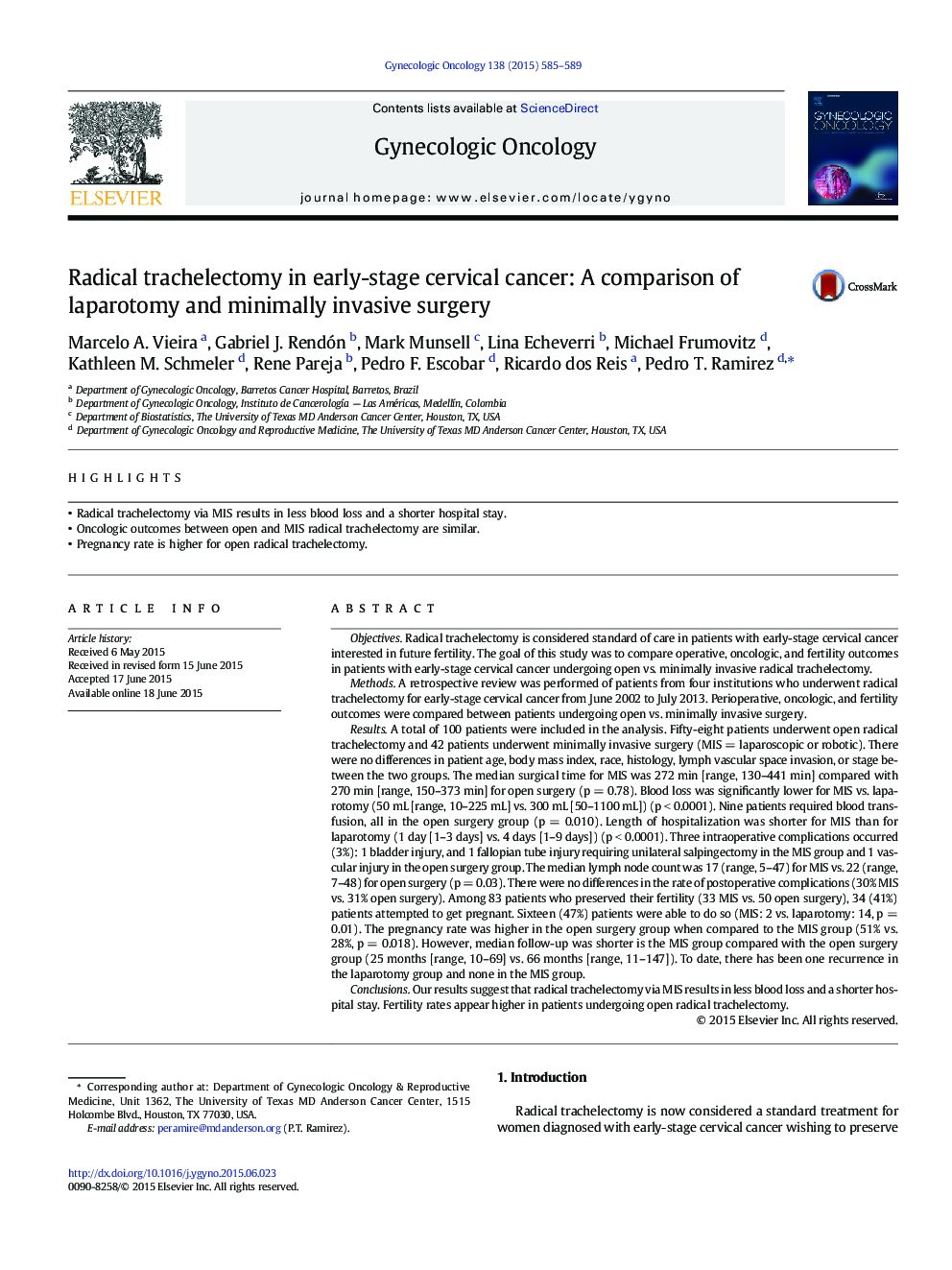| Article ID | Journal | Published Year | Pages | File Type |
|---|---|---|---|---|
| 3942654 | Gynecologic Oncology | 2015 | 5 Pages |
•Radical trachelectomy via MIS results in less blood loss and a shorter hospital stay.•Oncologic outcomes between open and MIS radical trachelectomy are similar.•Pregnancy rate is higher for open radical trachelectomy.
ObjectivesRadical trachelectomy is considered standard of care in patients with early-stage cervical cancer interested in future fertility. The goal of this study was to compare operative, oncologic, and fertility outcomes in patients with early-stage cervical cancer undergoing open vs. minimally invasive radical trachelectomy.MethodsA retrospective review was performed of patients from four institutions who underwent radical trachelectomy for early-stage cervical cancer from June 2002 to July 2013. Perioperative, oncologic, and fertility outcomes were compared between patients undergoing open vs. minimally invasive surgery.ResultsA total of 100 patients were included in the analysis. Fifty-eight patients underwent open radical trachelectomy and 42 patients underwent minimally invasive surgery (MIS = laparoscopic or robotic). There were no differences in patient age, body mass index, race, histology, lymph vascular space invasion, or stage between the two groups. The median surgical time for MIS was 272 min [range, 130–441 min] compared with 270 min [range, 150–373 min] for open surgery (p = 0.78). Blood loss was significantly lower for MIS vs. laparotomy (50 mL [range, 10–225 mL] vs. 300 mL [50–1100 mL]) (p < 0.0001). Nine patients required blood transfusion, all in the open surgery group (p = 0.010). Length of hospitalization was shorter for MIS than for laparotomy (1 day [1–3 days] vs. 4 days [1–9 days]) (p < 0.0001). Three intraoperative complications occurred (3%): 1 bladder injury, and 1 fallopian tube injury requiring unilateral salpingectomy in the MIS group and 1 vascular injury in the open surgery group. The median lymph node count was 17 (range, 5–47) for MIS vs. 22 (range, 7–48) for open surgery (p = 0.03). There were no differences in the rate of postoperative complications (30% MIS vs. 31% open surgery). Among 83 patients who preserved their fertility (33 MIS vs. 50 open surgery), 34 (41%) patients attempted to get pregnant. Sixteen (47%) patients were able to do so (MIS: 2 vs. laparotomy: 14, p = 0.01). The pregnancy rate was higher in the open surgery group when compared to the MIS group (51% vs. 28%, p = 0.018). However, median follow-up was shorter is the MIS group compared with the open surgery group (25 months [range, 10–69] vs. 66 months [range, 11–147]). To date, there has been one recurrence in the laparotomy group and none in the MIS group.ConclusionsOur results suggest that radical trachelectomy via MIS results in less blood loss and a shorter hospital stay. Fertility rates appear higher in patients undergoing open radical trachelectomy.
